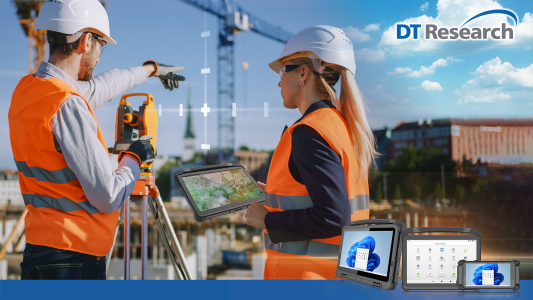
As cities across the globe race toward becoming more connected, efficient, and sustainable, the demand for powerful, mobile technologies to support this revolution is growing exponentially.
Smart city management involves the strategic use of information and communication technologies (ICT) to deliver more efficient services, improve governance, enhance sustainability, and ensure a better quality of life for citizens.
At the heart of many smart city solutions are rugged tablets—durable, high-performance, mobile computers built to operate in demanding environments. These rugged tablets are not just hardware solutions; they are the workhorses powering smart city management, helping governments and private sectors bridge the gap between digital plans and on-the-ground execution.
Why Rugged Tablets Are Ideal for Smart Cities?
Smart city operations don’t stop for weather, dust, vibrations, or rough handling. Standard consumer tablets often fail to deliver the durability and security needed in these settings. Rugged tablets, by contrast, are designed to thrive in exactly these conditions.
Here’s how rugged tablets are changing the game in smart city management:
1. Scalability and Modularity That Grow with the City
In smart cities, flexibility is the key. Rugged tablets offer scalability and modularity, which is perfect for smart cities. Modular options permit departments to equip the same tablet with different accessories—barcode scanners for inventory, GPS for geolocation tasks, or RFID readers for asset tracking—creating a highly versatile, future-ready solution.
From small local government departments to expansive city-wide infrastructures, these rugged tablets adapt to changing technical requirements and applications.
2. Seamless Integration with Smart Systems
A smart city relies on the seamless integration of public and private sector systems. Rugged tablets serve as the connecting factor across these sectors, enabling personnel to access shared platforms, track progress, and report issues in real time.
Whether managing utility infrastructure, public transit, waste collection, or traffic systems, rugged tablets can connect to integrated database systems and geographical information systems (GIS) to offer up-to-date, location-specific data, allowing reduced bottlenecks while ensuring smoother coordination and faster response times.
3. Enhanced Governance on the Go
In an era when digital transformation is not only a goal but a necessity, officials can adhere to policies and procedures even when they are not in the office. Mobile access to dashboards, reports, and communication platforms while providing assurances of uniformity and accountability across departments is made possible with these rugged devices. Rugged tablets enable field workers and city officials to effectively carry out governance operations at any time and from any location.
4. Secured and Authorized Information Flow
Security is non-negotiable when dealing with smart city data. Rugged tablets ensure that all data transmitted in a smart city environment is encrypted and authorized, protecting sensitive information related to infrastructure, energy usage, public safety, and citizen data.
Many rugged tablets come equipped with advanced security features, including biometric authentication, encrypted storage, and secure network connections—making them ideal for mission-critical environments.
5. Automated Systems and Real-Time Monitoring
Smart cities rely on automated information and working systems to reduce manual workload and increase efficiency. Rugged tablets give personnel access to automated alerts, maintenance schedules, and progress tracking, allowing real-time responses to infrastructure issues, equipment malfunctions, or safety concerns.
This constant visibility into system operations also ensures that potential issues are flagged before they escalate, saving time, money, and potentially lives.
Rugged tablets are purpose-built to thrive in the dynamic, often harsh environments of smart cities, offering features that directly enhance urban operations and service delivery:
- Durability in Extreme Conditions: Rugged tablets are built to withstand drops, dust, water, and extreme temperatures, which ensure uninterrupted performance in the field.
- Real-Time Connectivity: Rugged tablets have built-in Wi-Fi, LTE, and GPS, which keep workers connected to central systems for instant data access, updates, and communication.
- Integrated Security: Robust, rugged tablets have advanced security features such as security card login, encrypted storage, and secure network protocols that protect sensitive smart city data.
- Modular Accessories: Barcode scanners, RFID readers, and GPS modules can be added to meet diverse operational needs across departments.
- GIS and Mapping Capabilities: Field workers are able to visualize infrastructure and location-based data in real time for faster, more accurate decision-making with the aid of rugged tablets.
- Hot-swappable and Long Battery Life: Extended power allows for full-shift use without needing frequent recharging, ideal for mobile teams and remote fieldwork.
- Touchscreen Usability: Sunlight-readable, glove-compatible screens support usage in all lighting and weather conditions.
- Compatibility with Smart City Platforms: Easily integrates with various software systems, from infrastructure monitoring to emergency response dashboards, enabling seamless data flow and coordinated action.
Smart city management is no longer a futuristic concept—it’s here, and it’s expanding rapidly. As cities continue to implement intelligent systems for everything from energy and transportation to governance and emergency services, rugged tablets used to operate, monitor, and maintain these systems must be equally intelligent, resilient, and adaptable.

